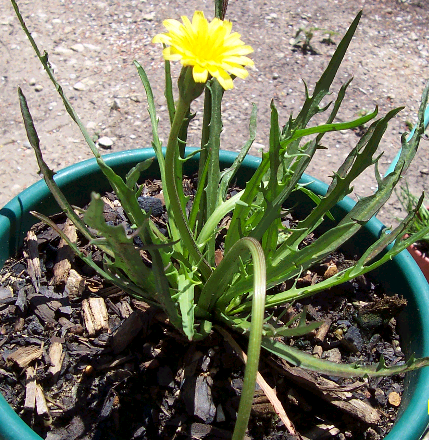 Dark Emu: Black seeds agriculture or accident? by Bruce Pascoe
Dark Emu: Black seeds agriculture or accident? by Bruce PascoeMy rating: 5 of 5 stars
This Christmas I visited a friend who gave me two precious things: a copy of Bruce Pascoe’s book Dark Emu and an envelope of seeds from the daisy yam, Microsceris Lanceolata, known as “murnong" in the Boonwurrung language.
Dark Emu begins by challenging the received historical wisdom about Australian Aboriginal peoples which says that they were hunter-gatherers who lived opportunistically in a kind of harsh subsistence at the hands of nature. Pascoe argues that this description suited early settlers who wanted to see indigenous people as passive and childlike; unable to take responsibility for the land on which they wandered and undeserving of its possession.
By contrast, Pascoe shows a very different indigenous relationship to land and nature. Working systematically through early white accounts of contact with Aboriginal people and their land, Pascoe shows how accomplished Aboriginals were as farmers.
 |
|
CC BY-SA 3.0, https://en.wikipedia.org/
w/index.php?curid=5603763
|
It’s easy to take this history at face value and conclude that it was an unfortunate but relatively inconsequential side effect of agricultural development which caused the demise of the daisy yam. What this surface analysis hides is a much more complex understanding of the farming practices of Aboriginal people. When white settlers arrived, they saw an environment which they often described as “park-like”. Early descriptions I have read of the Mornington Peninsula talk about its open grasslands reminiscent of an English park. As a kid on weekend hikes battling my way through the thick scrub of the Otway Ranges, I remember being amazed to recall the stories of an elderly neighbour who had grown up in the area. He talked about the descriptions of the early bushmen who described the area as open and grassed, shaded by the enormous eucalypts that now were just stumps amid a younger generation of regrowth.
Pascoe shows that it wasn’t just sheep and logging that changed the environment but a loss of indigenous farming practices. Aboriginal people systematically burned and managed the environment to produce food sources when and where they needed them. The daisy yam requires a loose, friable soil and the harvesting practices supported regrowth and soil conservation in a form of sustainable agriculture which modern Australian farmers are only beginning to understand. Sheep ate the yams, but what was far more destructive was their trampling of the earth which prevented regrowth. Within a few years, parklands were replaced with compacted soils which encouraged erosion and supported far fewer animals - including sheep. Indigenous populations collapsed and their complex management of the land ended.
This story alone would make Dark Emu a compelling and important book to read but Pascoe’s analysis goes further:
Some say the idea that the world trajectory is driven by conquest followed by innovation and intensification is satisfying to the Western mind because of our psychological dependence on our imperialist history. But if we give consideration to the idea that change can be generated by the spirit and through that to political action, then the stability of Australian Aboriginal and Torres Strait Islander culture might be more readily explained. (p.136)
In the later part of the book, Pascoe explores visions and versions of what it means to live well. Against the history of Western imperialism, Pascoe contrasts at least 40,000 years of carefully evolved environmental understandings deeply embedded in the cultural practices of Aboriginal Australians. As the world looks forward to a more sustainable future through aspirations like the United Nations Sustainable Development Goals, Dark Emu is a timely contribution to alternative views of history and a reminder that much of the knowledge we need may already exist.
I have passed my murnong seeds on to a colleague who will grow them with students at UWCSEA as part of a project to support natural diversity. I’m not hopeful that these temperate climate seeds will grow in the tropics of Singapore, but I hope to do my best to nurture the story they represent.
View all my reviews
No comments:
Post a Comment
Comments welcome. Sharing ideas is what it is all about. If you have written posts along similar lines, please add a link as well.